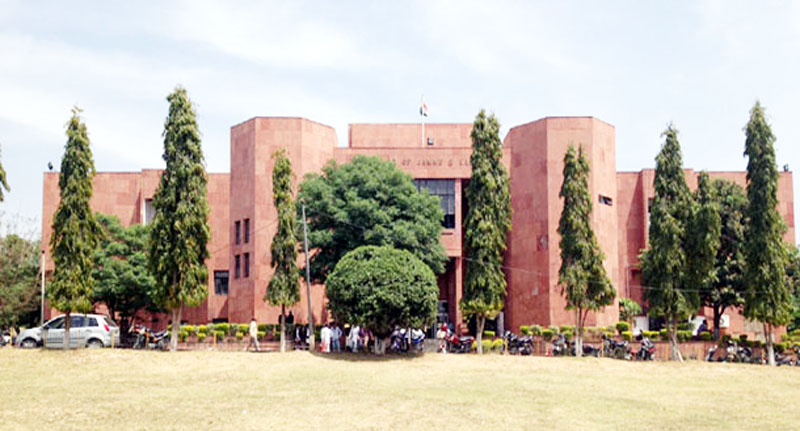All Magistrates of State asked to remain cautious
Excelsior Correspondent
JAMMU, May 11: High Court has held that a Magistrate may face administrative action as well as charge for destroying of record if any application whether on civil or criminal side is not properly diarized and registered.
The judgment has been passed in a petition challenging the order of CJM Jammu dated March 6, 2019 whereby the Magistrate after recording the statement of the petitioner has taken the cognizance of the complaint and directed the Inspector General of Police, Jammu to conduct the inquiry himself or by any other Police Officer not below the rank of Senior Superintendent of Police.
The petitioner was seeking a direction for registration of FIR against the private respondents for commission of the offence punishable under Sections 376 and 376-C read with Section 34 of the Ranbir Penal Code.
After hearing Senior Advocate KS Johal with Advocate Kamran Singh Johal for the petitioner whereas Deputy AG Raman Sharma for the State, Justice Sanjeev Kumar observed, “questions of seminal importance arise for consideration in this case are what is the meaning of the expression ‘taking cognizance’ as contained in Section 190 of the CrPC and what are the broader parameters which govern exercise of discretion by the Magistrate to proceed under Section 156(3) or under Section 202 of the Code of Criminal Procedure when a complaint of facts disclosing commission of cognizable offence is received by it?”
“Taking cognizance merely means judicial application of mind of the Magistrate to the facts mentioned in the complaint with a view to proceed under Section 200 CrPC and succeeding Sections in Chapter XVI of Code of Criminal Procedure but if the Magistrate applies his mind not for the purposes of proceeding under Chapter XVI but for taking action of other kind— directing investigation by the Police under Section 156(3) CrPC, it cannot be said to have taken cognizance of the offence”, High Court further observed, adding “Section 156(3) CrPC operates and can be invoked by the Magistrate before taking cognizance and is in the nature of the pre-emptory reminder or intimation to the police to exercise its preliminary power of investigation beginning with Section 156(3) CrPC and ending with report or charge sheet under Section 173CrPC”.
With these observations, Justice Sanjeev Kumar found no reason or justification to interfere with the order impugned except providing that the inquiry directed by the Chief Judicial Magistrate Jammu in the matter shall be restricted to ascertainment of the truth or falsehood of the complaint.
“Since this court has endeavoured to elaborately discuss the role of Magistrate on receiving a complaint of facts constituting the cognizable offence in the light of the provisions of Section 156(3), 190, 200, 202 and 204 CrPC, it would be in the fitness of things to circulate copy of this judgment to all the Judicial Magistrates working in the State for their guidance on the issue of law”, Justice Sanjeev Kumar said.
“I also take this opportunity to place on record my concern regarding the manner in which our Magistrates acts when it receives an application for bail, release of vehicle or other seized property and even a complaint under Section 156(3) CrPC. Invariably, it is seen that the applications in original are forwarded to the police as if the Police Station is an extension of the court. Any application filed before the Magistrate is record of the court, needs to be properly diarized and not sent in original to the Police Station”, Justice Kumar said.
“Such act may even amount to destroying the record of the court. It is, thus, emphasized that henceforth, whenever any application whether on civil side or criminal side is received by a court, the same shall be necessarily diarized and registered”, High Court said, adding “any Magistrate/court found violating shall be liable to action on the administrative side and may also be charged for destroying the record of the court”.


